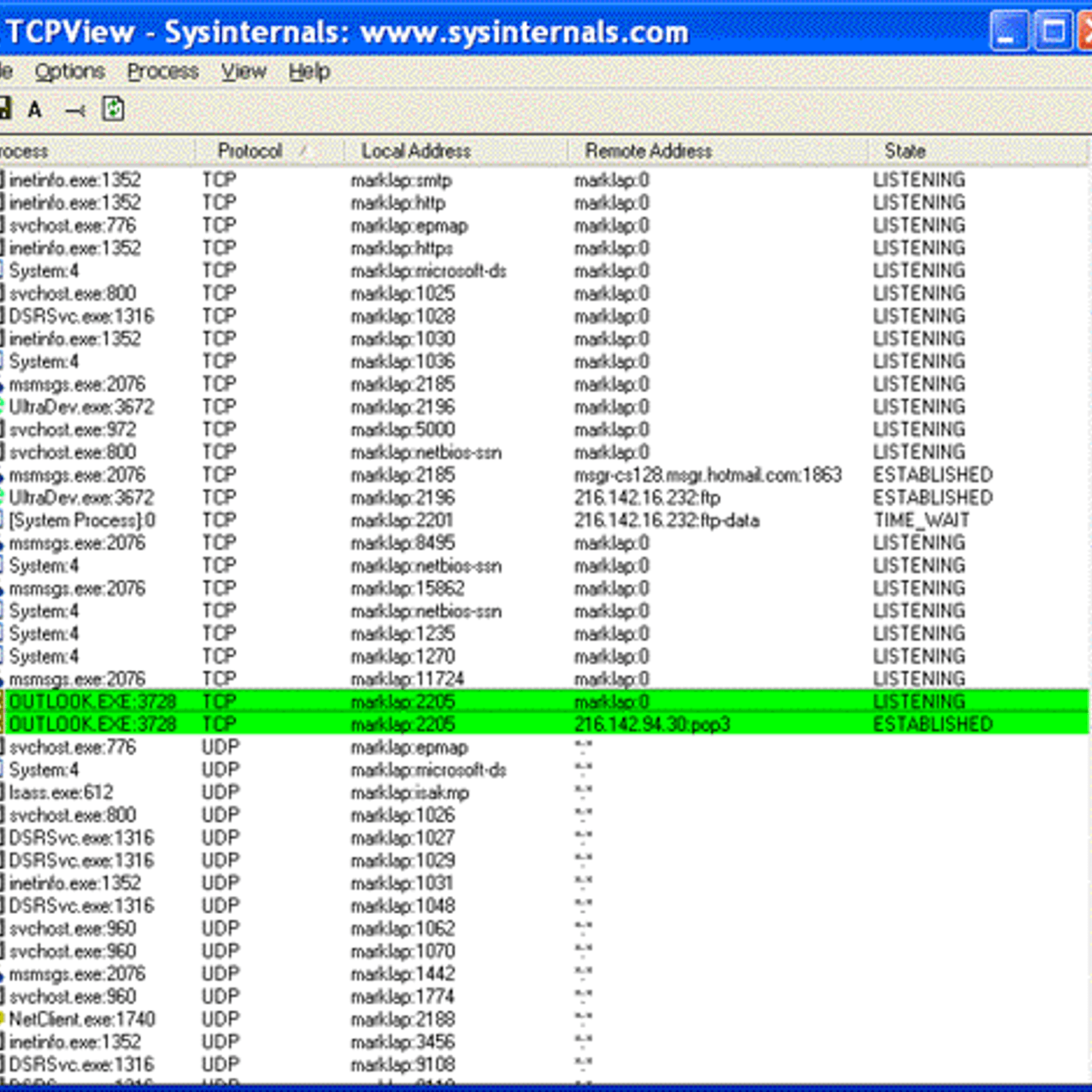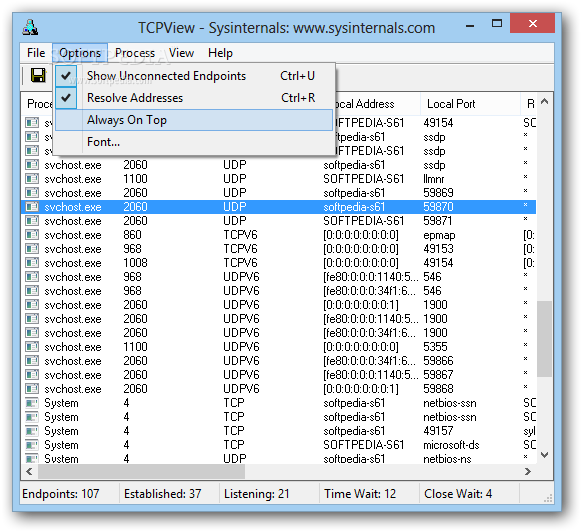There may be different reasons (connection trouble, slow browsing, simple curiosity, etc) that raise the very same question - what is happening with network connection right now?
TCPMonitor is a similar tool and functions the same way as Sysinternals TCPView but is a little more user friendly. It displays the necessary ports, addresses, status and process name/PID and clicking on the toolbar icons will enable auto refreshing and filtering in only established connections. Popular Alternatives to TcpView For Linux for Windows, Linux, PortableApps.com, Software as a Service (SaaS), Mac and more. Explore apps like TcpView For Linux, all suggested and ranked by the AlternativeTo user community. It's similar to iptraf.I'd like something with grouping by processes, like this one, but it's written in python.There is also nethogs but it's too buggy and doesn't have scrolling and groups collapsing.
Windows itself can barely identify if connection is working at all, monitor utilities are usually more occupied with counting traffic.


While I try to stick with single application for specific task I ended up with two for monitoring network connections TCPView (of Sysinternals) and CurrPorts (of NirSoft).
Does one of them needs to go? :)
Both apps have a lot in common. They are lightweight, single-file, portable. TCPView is larger, but 145Kb is fine even by ancient floppy grade. Both have simple and informative GUI (it’s hard to re-invent list-of-whatever-with-columns).
Twins separated at birth? Not really.
As soon as you start clicking around CurrPorts suddenly has more buttons to push. It outputs more information and has few times more columns, allows to set complex filters, has more export options and even some CLI functions.
CurrPorts clearly wins functions war but when you start using these apps some sudden subtle differences show up in favor of TCPView. TCPView constantly refreshes list by default while CurrPorts needs this option found and turned on manually. CurrPorts offers a lot but horizontal scroll is required to view it all… Alternative to scroll is spending time at configuring and tuning. Also from my experience TCPView is more reliable for killing connections - which is common outcome of network troubleshooting. :)

Tcpview Alternative Group
CurrPorts has more bells and whistles but actually I always start TCPView first. It is simply more suitable for instant action while another one is more suited for long and thorough research.
Am I willing to cut one? I may cut CurrPorts despite all those functions (I rarely need), but I know that following moment Murphy’s law is going to kick in and serve me with problem out of TCPView reach. :)

Which one to choose? Start with TCPView and move on to CurrPorts if first one is not enough.
CurrPorts home&download page http://www.nirsoft.net/utils/cports.html
TCPView home&download page http://technet.microsoft.com/en-us/sysinternals/bb897437.aspx